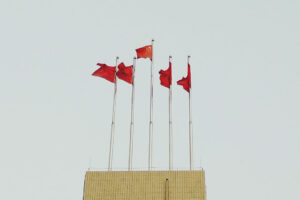PHL foreign investment pledges rise to record

By Lourdes O. Pilar, Researcher
APPROVED foreign investment pledges in the Philippines almost quadrupled last year, buoyed by economic growth that was one of the best performing in Asia last year, according to data from the local statistics agency.
Pledges hit a record P889.07 billion ($15.9 billion), about 3.7 times higher than a year earlier and the highest since 1996.
Investment pledges rose 2.3 times year on year to P394.45 billion in the three months to December, the largest in three quarters.
Germany was the top source of approved foreign investment pledges last year with P393.99 billion, 5,400 times bigger than its year-ago pledge. Investment commitments from Germany accounted for 44.3% of the total.
The Philippine Statistics Authority compiles investment pledges from the government’s seven investment promotion agencies. It is different from the actual foreign direct investments tracked by the Bangko Sentral ng Pilipinas for the balance of payments.
The Board of Investments (BoI) contributed the biggest bulk of the foreign investment pledges with P767.63 billion, or 86.3%. The Philippine Economic Zone Authority PEZA came in second with P112.13 billion, followed by the Subic Bay Metropolitan Authority with P7.17 billion, Clark Development Corp. with P1.55 billion, BoI-Bangsamoro Autonomous Region in Muslim Mindanao with P359 million and Authority of the Freeport Area of Bataan with P74.5 million.
Meanwhile, investment pledges from Filipino nationals fell annually by 38.7% to P190.7 billion in the fourth quarter, accounting for 32.6% of the combined pledges worth P585.15 billion.
If these projects take shape, foreign and local investments pledged last quarter are expected to generate 28,529 jobs.
Cid L. Terosa, a senior economist at the University of Asia and the Pacific (UA&P), said higher-than-expected economic growth in the third and fourth quarters had spurred the influx of foreign investments.
“Also, the tremendous increase in net investments in debt instruments in November 2023 that fueled the double-digit growth of foreign direct investments in the same month helped push upwards foreign direct investments in the fourth quarter of 2023,” he said.
Economic output expanded by 5.6% last quarter, slower than 6% in the third quarter and 7.1% a year earlier.
Foreign direct investment net inflows rose by 27.8% year on year to $1.048 billion in November from a year earlier, according to central bank data.
Mr. Terosa said foreign direct investments would be affected by geopolitical uncertainties in Asia and the Middle East.
“Elections in many countries around the world, tensions in Asia involving China and other Asian countries, trade route disruptions and the evolving complexities of the war between Russia and Ukraine as well as the war between Israel and anti-Israel forces have connived to make major investors around the world jittery,” he said.
“Since the growth rate during the first quarter of 2023 was high, I expect the growth rate of foreign direct investments in 2024 to be affected by base effects,” he said.
“Foreign direct investments will follow a definite upward trajectory during the second half of 2024 as the global economic recovery becomes more stable,” he added.




